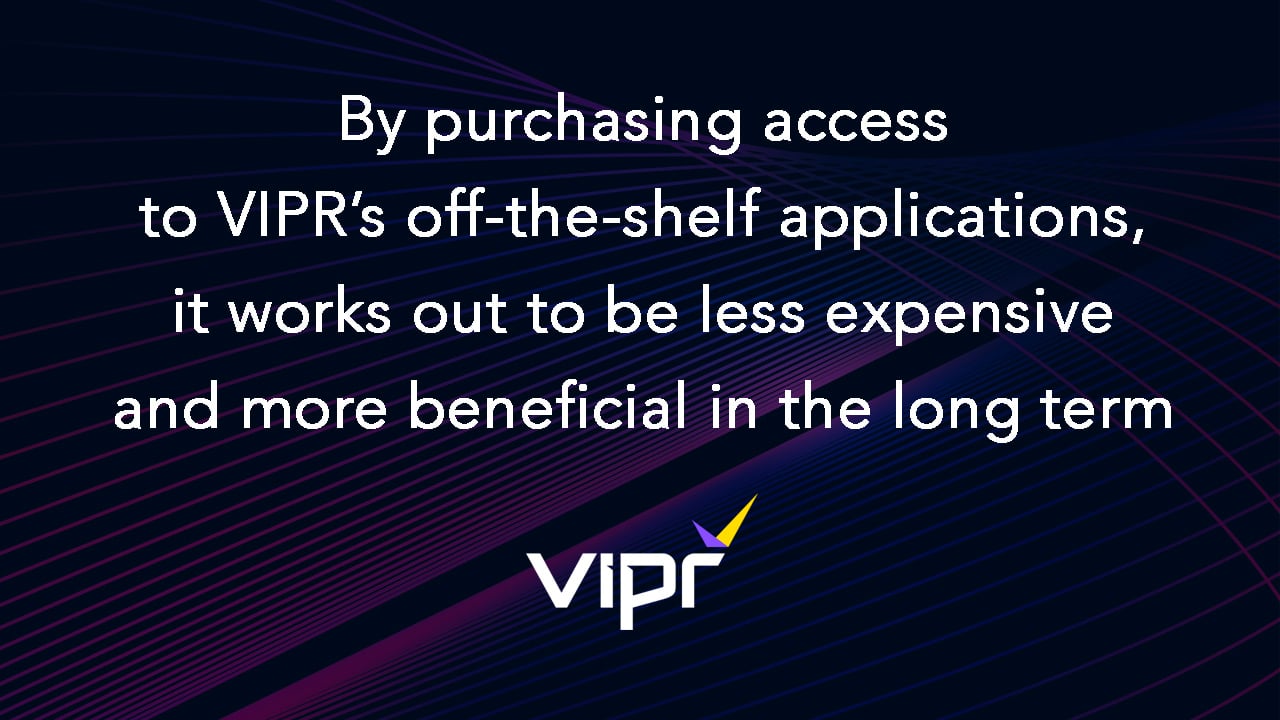In an age when systems and data can be downloaded instantaneously, it’s a rare organisation that would contemplate building an enterprise system entirely on its own. So, is “build” out, and “buy” in? Not entirely, according to leaders at VIPR.
“Building” a system still has the benefit of devoting all of a company’s IT resources to maintaining its own operations without incurring licensing fees, says Greg Massey, North American advisor to VIPR.
“An internally developed system is designed for your purposes, and you manage and control your own IT talent,” Greg says. “In contrast, no system you ‘buy’ comes out of the box completely ready for you to use. You have to devote talent and money to adapt it to your needs.
“I’ve seen companies get to the point in that process where they ask, ‘Are we going to spend more on this than if we had built it ourselves?”
On the other hand, Massey has seen companies embark on ambitious in-house development projects that never reached completion.
Whether an insurance company engages a vendor to develop or adapt a system for them, the vendor invests a lot to learn and understand the challenges, objectives and solutions required in order to fulfill the companies requirements, according to Tony Russell, VIPR’s chief revenue officer. That learning will often end up benefiting other companies in turn and therefore impacting the overall market process with program data processing across multiple stakeholders.
What VIPR lets you buy
With decades of experience in designing and implementing insurance back-office automation, VIPR experts are committed to providing data management platforms that insurers can readily customise for their own needs.
“Our solutions are built in a way that allows the customer to be in control,” says David Butler, director of client services. VIPR applications allow users to tailor the data according to user-defined data mappings, validations, and reporting standards.
“We’re in the business of bordereaux data management and data insights, and we see what carriers and intermediaries need from each other,” he adds. “Our users aren’t on their own when dealing with different reporting systems. We are in a position to help all parties identify and implement the best current practices available to them. VIPR's internal teams of developers and testing keeps us and our solutions on the forefront of insurance distribution applications.”
What VIPR lets you build
VIPR applications save users valuable time working on data so they can work with data to refine their underwriting strategies and improve their operating results. With strategic partnerships with Guidewire and Insurity, this allows the end user to utilise a seamless process from system-to-system.
VIPR’s experience demonstrates that insurance firms can reposition employees for more strategic roles, give time back, which in turn is cost saving to focus on more strategic projects, and this can allow the firms to save on a financial and time basis.
“With data from all stakeholders shared in a clean, common format, the parties find it much easier to discern insights and act upon them with full transparency across the carrier, broking and distribution parties,” says Russell. “The favourable impact on the expense ratio allows for greater leeway in the loss ratio.”
“By buying access to a VIPR platform, users also benefit from frequent upgrades with enhancements suggested by the entire VIPR customer base,” Paul Templar, CEO says.
“In all, by purchasing access to VIPR’s off-the-shelf applications and tailoring them to a user’s specific needs, it works out to be less expensive and more beneficial in the long term than building your own system, especially when you consider the available features and upgrades.”
